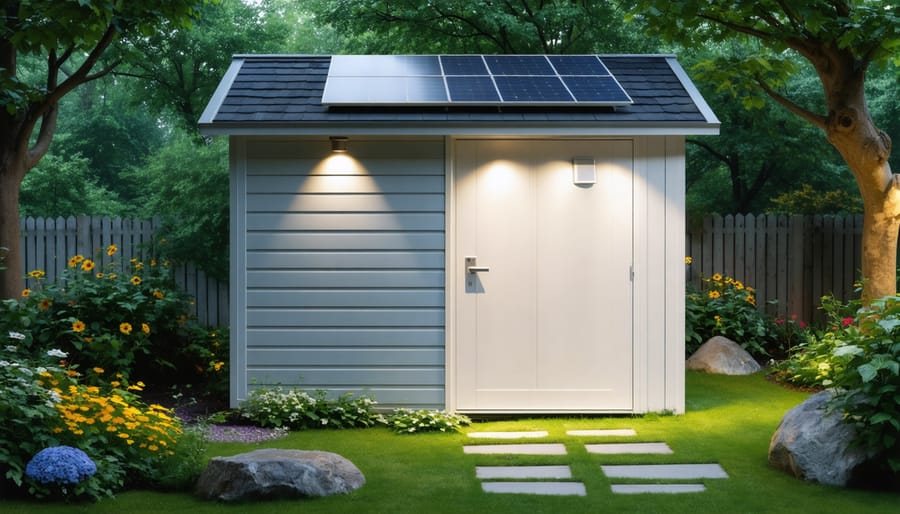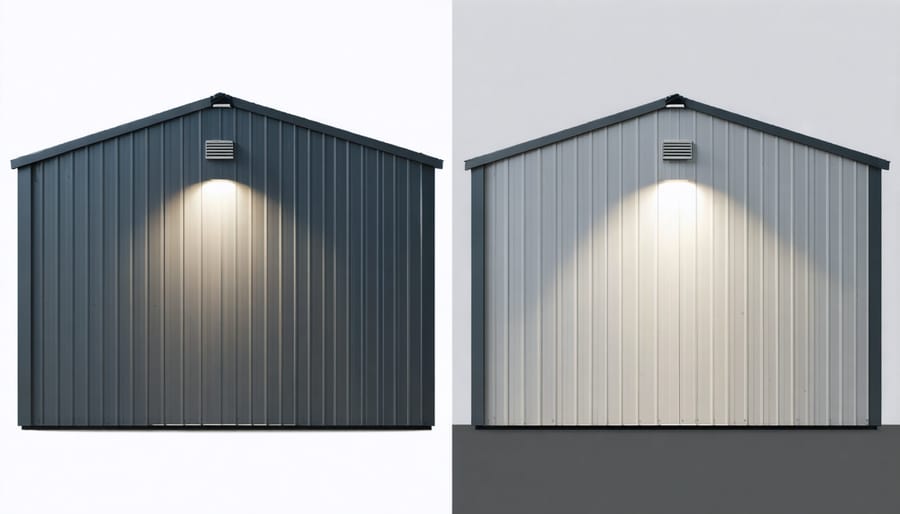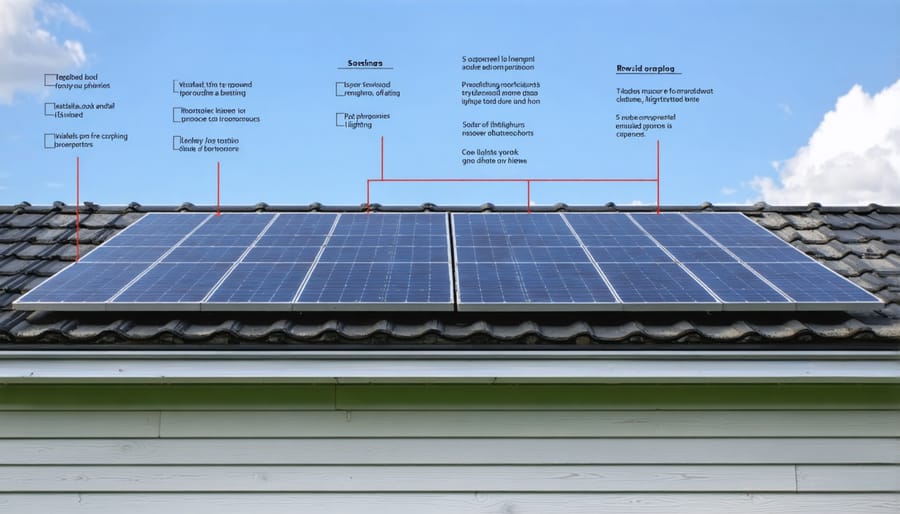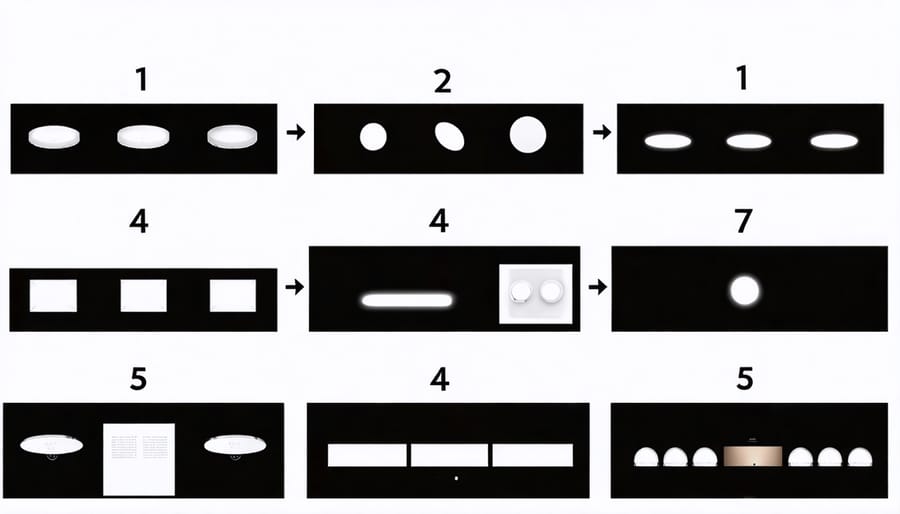Smart Lighting Makes Your Shed Eco-Friendly (And Cuts Your Energy Bill)

Transform your building into an environmental powerhouse with cutting-edge eco-friendly design features that slash energy costs while protecting our planet. Modern sustainable architecture has revolutionized how we approach construction, combining innovative materials with smart technologies to create buildings that work in harmony with nature. From solar-powered heating systems and living green walls to rainwater harvesting and natural ventilation, eco-friendly buildings aren’t just good for the environment – they deliver significant cost savings and enhanced comfort for occupants.
Studies show that green buildings reduce energy consumption by up to 50% compared to conventional structures, while improving indoor air quality and occupant wellbeing. Whether you’re planning a new construction project or retrofitting an existing building, sustainable design principles offer practical solutions that benefit both your bottom line and the environment. The future of architecture is here, and it’s powered by smart, sustainable innovations that make every square foot count.
Why Your Shed Needs Smart Lighting

Energy Savings That Pay For Themselves
Smart lighting solutions in eco-friendly sheds offer remarkable returns on investment, often paying for themselves within 12-18 months. By implementing integrated energy systems, homeowners can reduce their lighting costs by up to 75% while extending bulb life significantly. Motion sensors ensure lights only operate when needed, while LED fixtures consume just a fraction of traditional bulb energy.
A typical storage shed equipped with smart lighting can save between $10-15 monthly on energy bills. These savings increase during winter months when lighting needs are greater. Many DIY enthusiasts find that installing occupancy sensors and LED strips is straightforward, requiring basic tools and minimal expertise. The initial investment for a complete smart lighting setup usually ranges from $150-300, depending on shed size and chosen features.
For maximum efficiency, consider combining natural light solutions with smart fixtures. Skylights or transparent panels can reduce daytime energy needs while automated systems manage evening illumination perfectly.
Convenience Features You’ll Actually Use
Modern eco-friendly buildings aren’t just about saving the planet – they’re packed with features that make your daily life easier. Motion sensors automatically control lighting in common areas, ensuring you never waste electricity by leaving lights on. Smart thermostats learn your schedule and preferences, maintaining optimal temperature while minimizing energy usage.
Remote control systems let you manage everything from your smartphone, from adjusting ventilation to monitoring energy consumption in real-time. Automated blinds work with natural light sensors to maximize daylight and reduce heating costs, while smart water systems detect leaks and monitor usage patterns.
Many homeowners particularly appreciate the convenience of scheduled settings – imagine arriving home to perfectly adjusted lighting and temperature without touching a switch. These features not only reduce your environmental impact but also save time and effort in managing your living space, proving that eco-friendly choices can actually make life more comfortable.
Best Smart Lighting Options for Your Shed
Solar-Powered Smart Lights
Brightening your eco-friendly building with solar-powered solutions has never been more accessible or affordable. Smart LED lights powered by solar energy offer an elegant combination of sustainability and modern convenience. These systems typically include solar panels, efficient LED bulbs, and smart controllers that allow you to manage your lighting from your smartphone.
During the day, the solar panels collect and store energy in batteries, ensuring reliable illumination throughout the night. Motion sensors can be integrated to activate lights only when needed, further reducing energy consumption. Many systems also offer customizable settings for brightness levels and operating schedules.
The benefits extend beyond energy savings. Solar-powered smart lights require minimal maintenance, have a longer lifespan than traditional bulbs, and can increase your property’s value. They’re particularly effective for outdoor areas and remote structures where running electrical lines might be challenging or costly.
Installation is surprisingly straightforward, with many systems designed for DIY setup. Most kits come with detailed instructions and mounting hardware, making it easy to transform your space into an energy-efficient environment.

Battery-Operated Smart Systems
Battery-operated smart systems offer an eco-friendly way to power your building’s essential functions without relying on grid electricity. Modern lithium-ion battery systems can store energy from solar panels, providing reliable power for lighting, security systems, and climate control devices. These systems come with smart controllers that automatically manage power distribution, ensuring optimal usage during peak and off-peak hours.
Many homeowners find success with modular battery systems that can be expanded as needs grow. A basic setup typically includes a 48V battery bank, capable of running LED lights, fans, and small appliances for several days. Smart monitoring apps let you track power consumption and battery levels right from your phone, making it easy to manage your building’s energy use.
For maximum efficiency, pair your battery system with motion sensors and automated controls. This combination can reduce energy waste by up to 40% while maintaining comfort and functionality. The initial investment typically pays for itself within 3-5 years through energy savings.
Hardwired Smart Solutions
When designing an eco-friendly shed, permanent smart solutions offer long-term benefits and seamless operation. Modern hardwired systems integrate seamlessly with your shed’s electrical infrastructure, providing reliable lighting, climate control, and energy management. Motion sensors, automated ventilation, and LED lighting systems can be strategically installed during construction, eliminating the need for battery-powered alternatives.
These built-in solutions connect directly to your home’s power supply and can be enhanced through smart grid integration, allowing for optimal energy usage and cost savings. Automated thermostats and humidity controls work together to maintain ideal conditions while minimizing energy consumption. Consider installing energy-monitoring displays to track usage patterns and adjust settings accordingly.
Professional installation ensures proper wiring and weatherproofing, protecting your investment while maintaining the shed’s structural integrity. While initial costs may be higher than portable options, hardwired solutions typically offer better long-term value and reliability, making them an excellent choice for eco-conscious homeowners.
Installation Made Simple

DIY Installation Tips
Before starting your eco-friendly building project, ensure you have all necessary materials and tools laid out. Start by selecting a level spot with good drainage and mark your foundation area clearly. When installing solar panels, position them facing south at a 30-45 degree angle for optimal sunlight exposure. For natural insulation, consider using recycled denim or sheep’s wool, which are easier to handle than fiberglass alternatives.
Create a detailed checklist for your ventilation system, focusing on cross-ventilation points. Install windows on opposite walls and consider adding a solar-powered ventilation fan in the roof. When setting up rainwater collection systems, ensure your gutters have a slight downward slope (about 1/4 inch per foot) toward the collection barrel.
For green roofing, start with a sturdy waterproof membrane before adding your growing medium. Begin planting from the bottom up, securing each section as you go. Remember to leave access points for maintenance. Natural lighting can be maximized by installing translucent panels in strategic locations, reducing the need for artificial lighting during daytime hours.
Always check local building codes and obtain necessary permits before starting your project. Consider working with a buddy for safety, especially when handling larger materials or working at heights.
When to Call a Pro
While many eco-friendly building projects can be DIY endeavors, certain aspects require professional expertise. Contact a qualified contractor when dealing with electrical systems, especially for solar panel installation or complex lighting configurations. Professional help is also essential for structural modifications, such as reinforcing walls for green roofs or installing advanced ventilation systems.
Seek expert guidance when implementing rainwater harvesting systems that connect to your main plumbing, as incorrect installation can lead to contamination or flooding issues. For insulation projects involving specialty materials or requiring wall cavity access, professionals can ensure proper installation and prevent moisture-related problems.
Additionally, consult professionals when planning significant modifications to existing structures, particularly if your project requires permits or must meet specific local building codes. While eco-friendly upgrades can increase your property’s value, improper installation might void warranties or create safety hazards. Remember, investing in professional installation for complex systems often pays off through better performance, longer lifespan, and proper certification for insurance purposes.
Maintenance and Troubleshooting
Regular maintenance of your eco-friendly building’s smart lighting system ensures optimal performance and longevity. Start with a monthly inspection of all sensors and controls, wiping them clean with a soft, dry cloth to prevent dust buildup that could interfere with their operation.
Check your lighting schedule settings quarterly to ensure they align with seasonal changes and your building’s usage patterns. If you notice lights staying on longer than necessary or activating at odd times, recalibrate your motion sensors and adjust timing settings through your system’s control panel.
Common issues often have simple solutions. If lights aren’t responding to motion, first check that the sensors aren’t blocked by furniture or decorations. Battery-operated sensors typically need replacement every 12-18 months, so keep spare batteries on hand. For lights that flicker or dim unexpectedly, ensure all connections are secure and that your system isn’t overloaded.
When troubleshooting connectivity issues with smart controls, start by checking your Wi-Fi connection and restarting your hub. If problems persist, try removing and re-adding affected devices to your network. Keep your system’s software updated to prevent compatibility issues and security vulnerabilities.
For optimal energy efficiency, clean light fixtures and LED bulbs every six months. Dusty fixtures can reduce light output by up to 25%, forcing your system to work harder than necessary. Remember to check weather sealing around outdoor fixtures annually to prevent moisture damage.
If you encounter issues you can’t resolve, consult your system’s manual or contact the manufacturer’s support team. Many problems can be diagnosed and fixed remotely through their technical support services.
Creating an eco-friendly building isn’t just good for the environment – it’s a smart investment in your future that pays dividends through reduced energy costs, improved comfort, and increased property value. By incorporating sustainable materials, energy-efficient systems, and smart design principles, you can make a significant impact on both your carbon footprint and your wallet.
Remember that every green feature counts, whether you’re starting from scratch or upgrading an existing structure. From installing solar panels and LED lighting to choosing recycled building materials and implementing proper insulation, each step brings you closer to a more sustainable future.
Don’t feel overwhelmed by the prospect of going green – start with what’s feasible for your situation and budget. Even small changes can make a meaningful difference. Consider working with local contractors who specialize in sustainable building practices, and take advantage of available tax incentives and rebates for eco-friendly improvements.
By embracing sustainable building practices today, you’re not just creating a better space for yourself – you’re contributing to a healthier planet for future generations. Take that first step toward eco-friendly building, and join the growing community of environmentally conscious homeowners making a positive change.

